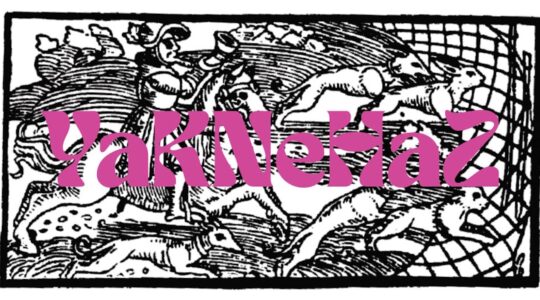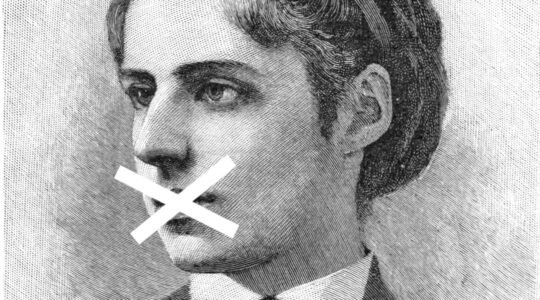“We want Moshiach now!” Have you sung it? What did you mean?
The Torah teaches us about the 4 stages of redemption (Shemot 6). Through God’s miraculous interventions in the world (the 10 plagues), there was a mass exodus, perhaps the greatest story of liberation and redemption in human history.
But we have to ask ourselves, is this the historical model for future redemption? Is this the way that we want it to occur? As a miracle of God?
In the middle of the plagues the Torah says, “Ain kamoni b’chol ha’aretz”—there is none like me in all of the land. It is not only distinguishing God from the belief in other gods. It is distinguishing what God can and should do versus what humans can and should do. In general, we follow halakhta b’drachav (imitatio dei) that we emulate the ways of God, but here there is a limitation. It may be that the text is saying: I (God) can redeem the world through a punishment of the other but do not think that you should emulate this in search of your own redemption. “Ain kamoni b’chol ha’aretz”—there is none like me—there is no one on earth that may act as I am acting here, for a higher reason than you can understand. Thus, the redemption from Egypt is different from the future model of redemption.
Jewish Messianism is everywhere in modernity, including Zionist, Chabad, and secular Jewish messianists (Karl Marx, Rosa Luxemburg, and Leon Trotsky and other Bolsheviks). It seems we cannot take the messianic impulse out of the Jew.
Today, the messianic impulse can have very dangerous expressions. More and more, we see messianism leading to extremism and also to the watering down of core Jewish values; the notion of the coming of Moshiach not only becomes disproportionately important in Jewish thought, but also a justification for lack of responsibility. The concept of Moshiach becomes a religious excuse, a crutch, a shortcut. When it is our collective version of the Tooth Fairy, Easter Bunny, or Santa Claus, we risk religiously remaining children, constantly expecting a supernatural intervention that will instantaneously change all of nature. We interpret a prophetic hyperbole too literally. But there is, of course, a very different model at the foundation of Jewish thought.
In the Gemara (Sanhedrin 98a), Rav Yehoshua ben Levi wrestles with the question of when and how messianism works, and asks Eliyahu HaNavi when the Messiah will come. Eliyahu replies that he should go ask the Moshiach himself, who is sitting at the entrance to the city of Rome. Rav Yehoshua then asks Eliyahu HaNavi how he will recognize the Moshiach at the gates of Rome. Eliyahu replies profoundly that he will be sitting amidst the poor and sick, putting bandages on them one by one.
The Messiah exists on the periphery of society (gates of Rome) and is a healer! Rav Yehoshua runs and finds the Moshiach and asks him when he will come. The Moshiach replies, “Today!”
Rav Yehoshua, confused, goes back to Eliyahu questioning why the Moshiach said “today.” Eliyahu replies, quoting Psalms, that it is today “If you will hear His voice.”
The Gemara is teaching us that Moshiach is here already. Messianic possibility is always right in front of us in a very real way.
The Rambam explains (Hilkhot Melachim) that in the pinnacle of human progress, nature will remain as it is, but there will be universal benefit to all humankind, not via miracles; Moshiach is not a miracle worker, but brings about change through natural means. It is through the good deeds of Jews and the censored part of the Rambam that says that Christians and Muslims also help pave the way for the messianic time. He explains there will be no more jealousy—all will feel they have sufficient resources due to the human transformation of society. There may be an enthroned king; Rambam calls this the Philosopher King (the one who fully contemplates and clings to God). But in the naturalistic view (as compared with the apocalyptic view), getting to a better place comes from us, not from this miraculous intervening redeemer. For the Rambam, the vehicle is halakhah, and he explains that the purpose of halakhah is to create a just society (Moreh Nevukim 3:27).
Yeshayahu Leibovitz explained further, based on his read of the Rambam, that Moshiach is not a person or event, rather it is a process. We are always waiting. It never actually comes about fully.
The messianic impulse can be very dangerous, but it can also be very positive, perhaps one of the most important Jewish values—to keep our optimism and idealism intact and to work to improve the world—where we progress but we never quite reach perfection. We improve through our human toil. Rabbi Yochanan ben Zakkai explains that even if you are planting a tree and the Messiah comes, what do you do? You keep planting your tree (Avot d’Rebbe Natan). That we are a part of redemption does not exempt us from the work we continually need to do to advance it. “The mitzvot of the Torah will never be nullified, not even in the future days (i.e., the messianic age],” (Jerusalem Talmud, Megilla).
We have made too many mistakes throughout history, thinking that the Messiah is a person or event. They are called Bar Kochva, Abulafia, Shabbatai Zvi, Jacob Frank, and certain Chassidic rebbes. It was Christian influence that helped further this idea of the single divine human. The Jewish notion, preceding that, suggested that all people are imbued with Divinity (Tzelim Elokim).
At the end of the day, I would like to suggest that we are Moshiach—we are the ones we have been waiting for.
The Baal Shem Tov, the founder of Chassidut, taught that one does not look outside one’s soul to bring about redemption: “All our prayers for redemption are essentially bound to be prayers for the redemption of the individual.” He taught that each of us must turn inward and seek redemption through seeking transcendence in all our actions and transactions.
While there are some important things to learn from the Reform movement, I believe that it was a mistake to take messianism out of the liturgy—we repair the world through activism but also through the moral components of all the mitzvot. Rav Kook emphasizes the messianic potential of our ethical actions and teachings (Talelei Orot, Essay on Reasons for the Commandments).
As Martin Buber said, “There is no definite magic action that is effective for redemption; only the hallowing of all actions without distinction possesses redemptive power. Only out of the redemption of the everyday does the Day of Redemption grow.”
As passionate Jews, we are hopeful—we believe in progress. Moshiach is the name of the value that we can do something that is truly magnificent. It reminds us that we must keep the highest optimism about the human potential to achieve on the highest level.
So we have raised the stakes. The Gemara (Shabbat 31a) says that when we ascend and stand at the end of our lives before the gates of heaven, one of the main questions asked of us is whether or not we yearned for redemption. Did we continue to believe in a better world and commit our lives to furthering that vision?
Today, yearning requires more intentionality. We must ask ourselves: what is the redemption we are working to bring about? How is our davening helping us to get there? How are we helping to create a more just society? How are we preparing our children to bring their contribution to our redemption? How are we intertwining our tikkun atzmi, tikkun kahal, tikkun clal, and tikkun olam (repair of self, community, Jewish people, and world)?
This is a formidable work, the biggest project that God gave the Jewish people and humanity. Perhaps the goal of Shabbat is to pause and taste a little bit of the perfection, the messianism that we never fully reach. Perhaps the suggestion that every Jew keeping Shabbat would bring the Moshiach means that if we were all to taste perfection together, we would be able to unite to collectively fulfill our mission.
Rav Shmuly’s book “Jewish Ethics & Social Justice: A Guide for the 21st Century” is now available for pre-order on Amazon.
The New York Jewish Week brings you the stories behind the headlines, keeping you connected to Jewish life in New York. Help sustain the reporting you trust by donating today.




